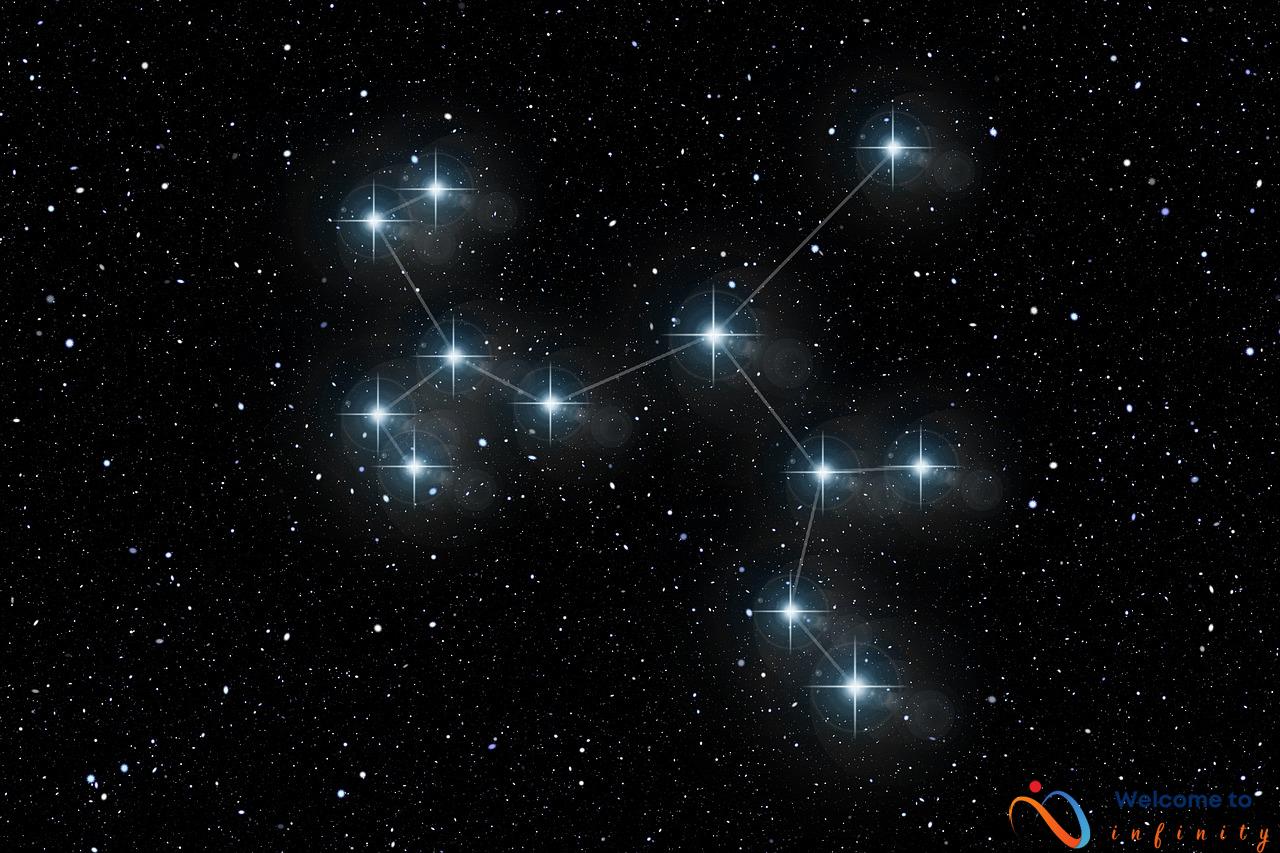the eight planets in our solar system all revolve around the sun, but some take longer than others to complete a single orbit. These planets, known as the slowest planets in the solar system, have unique features that set them apart from the rest. In this article, we'll take a closer look at these planets and explore what makes them so fascinating.
Neptune, the eighth and farthest planet from the sun, has the longest orbital period of any planet in our solar system, taking 165 Earth years to complete one orbit. Despite being so far away, Neptune has strong wind speeds, with the fastest winds recorded to reach up to 2,100 kilometers per hour. Its magnetic field is also complex and varies greatly from anywhere on its surface, making it a fascinating object of study.
Uranus, the seventh planet from the sun, is known for its peculiar tilt, leaning on its side at an angle of 98 degrees. It takes Uranus 84 Earth years to complete one orbit, and it has only been visited by one spacecraft, Voyager 2, in 1986. Uranus and Neptune are considered “ice giants” due to their composition, a mix of ice, rock, and gas.
- Neptune's largest moon, Triton, is believed to have been a captured object (not originally formed with Neptune) and has geysers of nitrogen gas that shoot up to 8 km high
- Uranus' smallest moon, Miranda, has varied terrains including cliffs as high as 20 km and valleys
Pluto, despite losing its planetary status in 2006, is still a fascinating object to study. It is the largest object in the Kuiper Belt, a region beyond Neptune that contains many small, icy objects. Pluto's highly elliptical orbit takes it closer to the sun than Neptune for 20 out of its 248 Earth-year orbit. In 2015, the New Horizons spacecraft flew by Pluto and captured detailed images of its surface, revealing a heart-shaped ice formation and many other features.
- Pluto has five known moons, with the largest, Charon, being approximately half the size of Pluto and likely formed from a collision between Pluto and another object
Sedna is a dwarf planet-like object located in the outer reaches of the solar system, beyond the Kuiper Belt. With an estimated orbital period of 11,000 years, it has one of the longest orbital periods of any object in our solar system. Sedna's distant orbit suggests the possible presence of a ninth planet in our solar system.
- Sedna is named after an Inuit sea goddess and was discovered in 2003 by Michael E. Brown and his team
Exploring the slowest planets in our solar system is essential to understanding our place in the universe. With unique features and long orbital periods, they remind us of the vastness of space and the mysteries that lay beyond our own planet.
Neptune
When it comes to distance from the sun, Neptune takes the crown for the farthest planet in our solar system. Despite being so far away, Neptune has some unique features that make it stand out amongst the other planets. One such feature is its strong winds, which can reach speeds of up to 1,300 miles per hour, making it the windiest planet in the solar system. These winds are so strong that they create large storms and even diamond rain in the planet's atmosphere.
Another interesting feature of Neptune is its complex magnetic field, which is tilted at an angle of around 47 degrees to its rotational axis. This causes it to wobble as it rotates and creates auroras at the planet's polar regions. The magnetic field is also believed to help protect the planet from the solar wind, which can be damaging to its atmosphere.
In terms of composition, Neptune is classified as an ice giant, meaning it is made up of a combination of ice, rock, and gas. Its atmosphere is primarily composed of hydrogen and helium, with traces of methane that give it a blue coloration. Neptune also has a faint ring system and 14 known moons, the largest of which is Triton.
Despite being the farthest planet from the sun and one of the least explored, Neptune still holds many secrets waiting to be uncovered. Who knows what other surprises it has in store for us?
Uranus
Uranus is known for being tilted on its side by approximately 98 degrees, making it the only planet in our solar system to have such an extreme tilt. It is also the seventh planet from the sun and has a pale blue color due to its composition of methane gas.
Despite being discovered in 1781, only one spacecraft, Voyager 2, has visited Uranus in 1986 during its mission to explore the outer planets. It revealed that Uranus has a faint ring system and a complex magnetic field.
Uranus is a gas giant and is composed mainly of hydrogen and helium gas with a small rocky core. It rotates in the opposite direction to most planets in the solar system and has a long orbital period of 84 Earth years. Its distance from the sun means that it receives very little heat and light, making it one of the coldest planets in our solar system.
Uranus' unique tilt causes extreme seasonal changes, with each pole experiencing 42 years of continuous daylight followed by 42 years of complete darkness. Its moon, Miranda, is the smallest of the five main moons and has a varied terrain with cliffs as high as 20km.
- Uranus is tilted on its side.
- It has only been visited by one spacecraft, Voyager 2.
- It has a faint ring system and a complex magnetic field.
- Uranus is a gas giant and is composed mainly of hydrogen and helium gas with a small rocky core.
- Miranda is the smallest of the five main moons and has a varied terrain with cliffs as high as 20km.
In conclusion, Uranus is a unique planet in our solar system due to its extreme tilt and has only been visited by one spacecraft to date. Its long orbital period and distance from the sun make it a cold and desolate planet with extreme seasonal changes. Miranda, its smallest moon, has varied terrain with towering cliffs that make it an interesting destination for future space exploration.
Ice Giants
The ice giants Neptune and Uranus are the two planets located at the outermost regions of the solar system. They are called “ice giants” due to their composition of ice, rock, and gas. The term ice is used to describe the various volatile materials like methane, ammonia, and water, which dominate the planet's atmosphere.
Both Neptune and Uranus are believed to have similar icy cores. The icy content, in combination with the low mass, makes the two planets extremely different from the gas giants like Jupiter and Saturn. Unlike gas giants, which have thick atmospheres rich in hydrogen and helium gases, the ice giants have a lower density and a thinner atmosphere that contains a higher percentage of heavier molecules, such as nitrogen, methane, and carbon monoxide.
The temperatures on Uranus and Neptune are extremely low, with Uranus being the coldest planet in the solar system, with a temperature of -197°C (-323°F). These low temperatures cause the methane in the atmosphere of Uranus and Neptune to condense, which imparts it with its distinctive blue-green hue.
The interiors of the ice giants remain a mystery, but scientists believe that they would be composed of layers of compressed elements like hydrogen, helium, and carbon. These elements change phases from liquid to supercritical as the pressure rises towards the core. The pressure is so immense near the core that scientists postulate the presence of “diamond rain” in the mantle of Uranus and Neptune.
Triton
Triton, Neptune's largest moon, is a fascinating world with unique features and curious origins. It is believed that Triton was not formed alongside Neptune, but rather was a captured Kuiper Belt object that ended up in Neptune's orbit.
Triton's surface is dotted with geysers that spew plumes of nitrogen gas and ice crystals into the atmosphere. This is a puzzling feature, as the moon should have long since frozen solid due to its extreme distance from the sun. Scientists speculate that the geysers may be a result of tidal heating caused by Neptune's gravitational pull on Triton's interior.
In addition to the geysers, Triton boasts other unique features that make it an interesting target for further exploration. Its surface is covered in a mix of rocky terrain and frozen nitrogen, with dark streaks that may be evidence of cryovolcanism. The moon also has a thin atmosphere that is composed mainly of nitrogen, with traces of methane and other gases.
The Voyager 2 spacecraft, which flew by Neptune and its moons in 1989, provided the first and only close-up images of Triton to date. However, there is much more to be discovered about this enigmatic moon and its place in Neptune's complex system.
Miranda
Miranda, the smallest moon of Uranus, is a fascinating celestial body that has caught the attention of astronomers and space enthusiasts alike. This icy world, discovered by Gerard Kuiper in 1948, has several unique features that make it stand out from the rest of Uranus' moons.
One of the most striking features of Miranda is its varied terrain. The moon is covered in a mix of cliffs, canyons, and valleys, with some cliffs reaching heights of up to 20 kilometers. These features are believed to have been caused by a combination of geological processes, such as tectonic activity and impact cratering.
In addition to its varied terrain, Miranda is also notable for its unusual rotational axis. Unlike the other moons in the Uranian system, Miranda's axis is tilted at an extreme angle of 27 degrees. This tilt is believed to have been caused by a collision with a large object in the moon's early history.
Miranda's composition is also unique. Like Uranus and Neptune, Miranda is classified as an icy world due to its rocky and icy composition. However, its surface is also rich in carbon and organic compounds, making it a prime target for future exploration and research.
Despite its small size, Miranda has played a significant role in shaping our understanding of the Uranian system. It was first visited by Voyager 2 in 1986, which provided the first detailed images of its varied surface features. Since then, various telescopes and spacecraft have continued to study Miranda and the rest of Uranus' moons, revealing more about the complex nature of our outer solar system.
In conclusion, Miranda is a small but fascinating moon with a variety of unique features. From its varied terrain to its unusual tilt and composition, it continues to captivate scientists and space enthusiasts alike. As our understanding of the outer solar system continues to evolve, we can expect to learn even more about the mysteries of Miranda and its neighbors in the years to come.
Pluto
Pluto was considered the ninth planet in our solar system until 2006 when the International Astronomical Union officially redefined it as a dwarf planet. Despite losing its planetary status, Pluto remains a fascinating object in our solar system. It is the largest object in the Kuiper Belt and has a highly elliptical orbit, meaning that its distance from the sun varies greatly throughout its orbit.
Pluto has a diameter of approximately 2,377 kilometers and is smaller than Earth's moon. Its composition is mostly rock and ice, and it has five known moons, the largest of which is named Charon. Charon is approximately half the size of Pluto and the two objects orbit around each other in a binary system.
In 2015, the New Horizons spacecraft flew by Pluto and captured stunning images of its surface features. One of the most notable features is a heart-shaped formation made of ice, which quickly captured the public's attention. Additionally, Pluto's atmospheric composition was analyzed and found to be nitrogen-dominated with traces of methane and carbon monoxide.
Pluto's orbit is highly inclined and tilted compared to the other planets and is often referred to as a “misfit” in our solar system. Its orbit takes approximately 248 Earth years to complete, and due to its distance from the sun and lack of atmosphere, temperatures on Pluto's surface can range from -240 to -220 degrees Celsius.
In summary, despite its loss of planetary status, Pluto remains one of the most intriguing objects in our solar system. Its unique features, such as its highly elliptical orbit and heart-shaped ice formation, continue to capture the imaginations of scientists and the public alike.
New Horizons
New Horizons, a spacecraft launched by NASA in 2006, completed its flyby of Pluto in 2015, revealing incredible details about the dwarf planet. Through its imagery, we were introduced to Pluto's surface, made up of ice mountains and vast valleys. One of the standout features was the “heart-shaped” formation in the southern hemisphere, measuring about 1,000 miles across. This formation was named Tombaugh Regio in honor of Clyde Tombaugh, the astronomer who discovered Pluto in 1930.
New Horizons' observations revealed that the heart-shaped formation was made up of two distinct regions. The western lobe, Sputnik Planitia, is a smooth plain covered in nitrogen ice, while the eastern lobe is made up of mountains rich in water ice, which tower to heights of 11,000 feet above Pluto's surface. This finding suggested that the dwarf planet may have a subsurface ocean of liquid water.
New Horizons also revealed that Pluto had a thin atmosphere, primarily made up of nitrogen, with traces of methane and carbon monoxide. During its flyby, the spacecraft also captured stunning images of Pluto's largest moon, Charon, which is believed to have formed due to a massive collision with Pluto billions of years ago. The imagery also revealed four smaller moons around Pluto, Nix, Hydra, Styx, and Kerberos, with Nix and Hydra being the most prominent.
The data collected by New Horizons has allowed us to learn more about Pluto and its moons than ever before. The incredible images and findings have spurred a renewed interest and fascination with the outer edges of our solar system and have undoubtedly opened up many more avenues for scientific exploration.
Pluto's Moons
Pluto, despite being downgraded from a planet to a dwarf planet in 2006, has been of great interest to scientists due to its unique characteristics. In addition to its highly elliptical orbit, Pluto also has five known moons. The largest of these moons, Charon, is approximately half the size of Pluto, making it the largest moon relative to its parent planet in the solar system.
Charon's size has led many scientists to believe that Pluto and its moon formed from a collision between two large bodies, with Charon being the remains of the smaller of the two. The other four moons, Styx, Nix, Kerberos, and Hydra, are much smaller than Charon and were discovered in 2005, 2011, and 2012, respectively.
Styx, named after the river in Greek mythology, is the smallest of Pluto's moons and has a highly irregular shape. Nix and Hydra both have irregular shapes and are believed to be binary objects, with two smaller bodies orbiting each other. Kerberos, named after the three-headed dog in Greek mythology, has a somewhat unusual shape, leading scientists to believe that it may also be a binary object or a merger of two smaller objects.
Studies of Pluto's moons have provided insights into the formation of the Pluto system and the early solar system, as well as shedding light on the dynamics of the Kuiper Belt. Future missions to Pluto, such as a proposed Pluto orbiter, could provide even more information about these fascinating bodies.
Sedna
Sedna, despite not being officially classified as a planet, is a fascinating object within our solar system. It's a dwarf planet-like object that has an extremely elongated orbit around the sun, with an estimated orbital period of 11,000 years. Its orbit is so distant that it is considered to be in the outer reaches of the solar system, beyond the Kuiper Belt.
What is most interesting about Sedna is that its orbit suggests the presence of a ninth planet in our solar system, which has been dubbed “Planet X.” The idea of a ninth planet has gained traction in recent years due to the unusual orbits of a number of outer solar system objects, including Sedna. Astronomers are actively searching for Planet X, but as of yet, it remains elusive.
Despite its remote location, Sedna has been observed by a number of telescopes on Earth and in space. It appears to be composed of rock and ice and has a reddish coloration, likely due to the presence of organic compounds on its surface. As with many other objects in the outer reaches of the solar system, much about Sedna remains a mystery, but it continues to intrigue astronomers and space enthusiasts alike.
Outer Solar System
Sedna is a dwarf planet-like object that is located in the farthest reaches of the solar system. Its orbit lies beyond the Kuiper Belt, a region of icy bodies that includes Pluto and other small rocky objects. Sedna's distance from the sun is approximately 76 astronomical units (AU), or 11 billion kilometers, making it one of the most distant objects in our solar system.
The name Sedna comes from Inuit mythology, where it was the goddess of the sea and marine animals. Sedna's surface temperature is estimated to be -240°C, and it has a reddish hue due to the presence of organic compounds and tholins on its surface.
Despite its small size, Sedna's highly elliptical orbit implies the presence of a ninth planet in the outer solar system. The planet, nicknamed Planet Nine, has yet to be directly observed, but its existence is supported by the gravitational effects it exerts on surrounding objects such as Sedna.
Further research is needed to confirm whether Planet Nine exists and to learn more about its characteristics. Sedna's remote location and unique features make it an interesting object of study for astronomers and planetary scientists.










